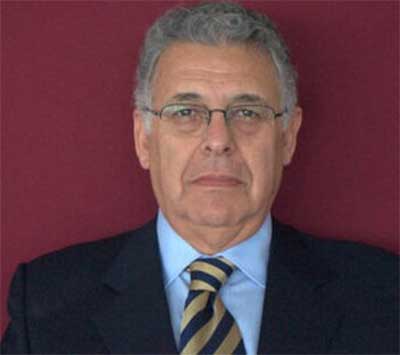Country without money buying Nuclear Base and Drones for border control (Russia-Iran)

By: Javier Torres Goitia Caballero - 23/06/2024
Guest columnist.Share:
The Institute of War Studies (ISW) of Iran assumed that the Tehran government will offer its drones to the authorities in La Paz (Ref. July 21, 2023 BBC News Editorial Staff) The Iranian Minister Mohammad Reza Ashtiani stated that “South American countries have a special place in Iran's foreign and defense policy due to being located in a very sensitive area (Ref. July 21, 2023 BBC News Editorial Staff) The Minister of Defense of the Plurinational State Edgar Novillo declared that the agreement involves the purchase of Shahed-186 Drones. These Drones were and are used in Ukraine by the Russian invasion, (The Guardian September 29, 2022—A Jazeera September 2022) in Iraqi Kurdistan by the Islamic Revolutionary Guard, (Mehr News Agency October 2022) in Syria against the North American military base Al-Tanf in territory occupied by the Syrian opposition, (The Washington Post December 2022). The Japanese-flagged Mercer Street oil tanker was attacked by Iran in the Gulf of Oman in July 2020, and was also used by the Huties in the Yemeni Civil War in 2020 (Vózpopuli October 2022). The cost of these Drones is approximately US$22,000 and they are used primarily for war events or declared wars. Are we thinking of declaring war on any neighbor? Because we will spend 10 million US dollars on the Drones alone. (elmundo.es April 2024)
The Minister of Security in Argentina denounced that the Bolivian-Iranian agreement “700 Iranians in Bolivian territory we consider to be members of the Quds Guard, which is the armed wing of the Iranian Islamic State” (Correo del Sur 04/21/2024 Péndulo Político)
Reuters published in March 2016 that the Government of Morales Ayma signed a contract with the company ROSATOM for the installation of a plant in the city of El Alto. The cost at the time was 350 million dollars. This has just been ratified by President Arce Catacora.
Bolivia currently has a fiscal deficit of 12% of GDP (G. Chávez) Reality shows us that, in 2020, according to the Milenio Foundation, the largest fiscal deficit with a value of more than 4 billion dollars. The Milenio Foundation in its publication Coy 498 of 2024, summarizes the situation of the Bolivian economy in the following terms “The legacy of the MAS policy is to have destroyed an industry (hydrocarbons) that could have changed the destiny and position of Bolivia in the region. What remains is the collapse of YPFB, a fiscally bankrupt State, a sinking economy, a country exposed to shortages, and an energy crisis...there is no nation more vulnerable than the one that cannot secure its energy sources."
Maternal Mortality is high, one of the highest in Latin America, with 160.9 per 1000 live births. An extremely high adolescent fertility rate of 31%. 68% of maternal deaths in Bolivia are in indigenous women and 14% in adolescents. The indigenous population was supposedly a priority in the social policy of the MAS
An investment of more or less 350 million dollars in the ROSTOM reactor means stopping investing in health.
It is worth remembering that in 1996, when the concept of National Maternal and Child Insurance was initiated in the Government of Sánchez de Lozada, and renamed Basic Health Insurance in the Government of General Banzer, approximately 8 to 9 million dollars were spent annually on inputs. , medicines and food for pregnant women and care for the newborn, with which we managed to reduce maternal mortality by 45% from 1996 to 2002. In other words, with 40 or 50 million dollars we had an important impact, the largest in the region, by improving the lives of women of childbearing age. In 2003 with the SUMI this figure rose to approximately 15 million dollars annually until 2006, that is, 45 million dollars more with another important reduction in maternal and neonatal mortality. Let us remember that the results of the Capitalization of the companies begin to give returns in 2006.
Let's imagine how much good we could do for the Bolivian population, especially those who live in rural or peri-urban areas, if we invested those 360 million dollars in something similar to the Public Health Insurance started in 1996? I don't think it is appropriate for a country like Bolivia, especially given the economic debacle we are in, where every peso counts for people's lives. Enough of the criminal slogans of the 21st century.
«The opinions published herein are the sole responsibility of its author».